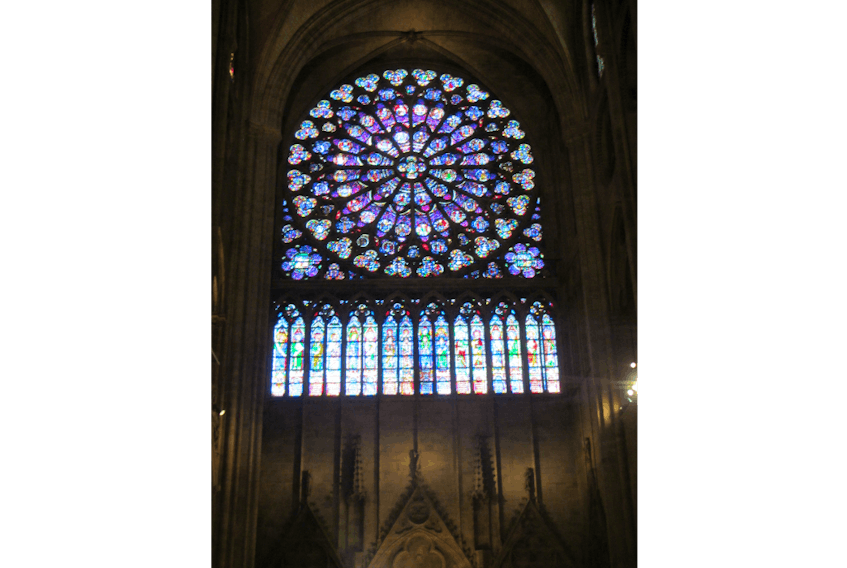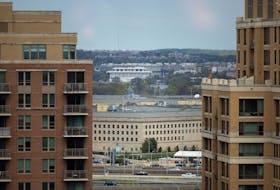On a tragic day, there was little to be thankful for in Paris, but the survival of the Notre Dame cathedral’s three massive rose windows is a victory — or at least a mercy.
The windows, which sit in the north, west and south faces of Notre Dame were among the most worried-over features of the cathedral itself. With the collapse of the spire, the uncertainty throughout much of yesterday of whether the structure would be saved, and conflicting news reports, many despaired that it was already too late for the great stained-glass windows.
Several times throughout the evening, different observers and journalists reported that the windows had been destroyed. Later, these reports were revised and many began to hope that the roses were at least partially preserved.
But along with the news that the structure of Notre Dame would be saved also came, soon after, confirmation that all three windows had survived mostly intact. The main threat to the windows comes now, media reports indicate, from the fragility of the cathedral’s structure.
The concern over the windows, and the lack of certainty over their condition was a microcosm of the panic to discover whether the building itself could be saved, and from there what firefighters and priests had managed to extract from the blaze and what they could stop the fire from damaging.
The rose windows were in many people’s thoughts because of their great beauty and historical significance.
The west window was the point of much of the concern Monday following unverified reports that the great organ in Notre Dame had been destroyed and that the window has melted due to the heat. These reports turned out the be false, though the organ may have sustained some water damage.
The west window is the smallest of the three, at 10 meters in diameter. It was the first to be installed, around 1225, though no original glass remains due to restorations in the mid-19th century. The window displays scenes of the Zodiac and of life in the Middle Ages.
The north window was originally installed around 1250 and contains the original glass from that time, making its survival all the more precious. It is the largest window, with a diameter of 13.1 meters. Designed by Jean de Chelles, it depicts figures from the Old Testament, arrayed around an image of the Virgin Mary in the centre pane.
The south window, meanwhile, is 12.9 meters in diameter and was installed around 1260. It had to be restored in the mid-19th century, while its images centre around stories of the New Testament. While the south window appears to have survived, a smaller stained-glass window above it appears burnt out.
READ MORE
- How do you fight a fire in an old cathedral? Pray for a miracle
- Americans, frequent visitors to Notre-Dame, begin fundraising efforts
- No sign of arson in Notre-Dame blaze as nation grieves for symbol
- Fire guts Notre-Dame Cathedral in Paris; Macron pledges to rebuild
- IN IMAGES: Paris' Notre-Dame Cathedral burning
Copyright Postmedia Network Inc., 2019









